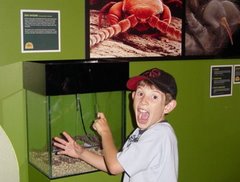After a rather extraordinary and moving welcome (and a very interesting and eventful journey to finally arrive in Rotorua!) we got straight into the conference theme museums, tourism, visitor experience.
Cheryll Sotheran spoke about the destination museum and national brand:
- Move from mass-market model of 20th century to consumer niche market model of 21st century – a holistic environment where economic, social and cultural are intertwined and interdependent
- Trends: decline of dominance of Western economies and rise of new Asian economies, with new kinds of values; move from a production to a consumption model which is market and values-driven
- Innovative-driven production providing services and products to values-driven markets
- What are these values? Sustainability, health and wellness, respect for authenticity, respect for culture and climate change
- We shod be providing experiences that have integrity and authenticity, that are memorable, have a narrative approach using innovative technologies with a welcoming customer service ethos
- Need to think about the new tourism demographic – demanding and needs-driven
- Does hyper reality make objects obsolete [not according to our research – they can work together in my view]
What should we be doing:
- Explore and understand technologies that exploit the gap between virtual and physical
- Play an active and leading role in world affairs especially in areas of sustainability, climate change and social equity
- No more 'business as usual for same old audiences', need to think more widely offering range of tailored experiences to a range of niche audiences
- Museums need to collaborate, while still retaining their strong individual brands but an underlying sharing of resources, identify meta-narratives and perhaps a value-based regional offer using themes rather than physical locality?
Thanks Cheryll for a really inspiring opening address.
Then had a fun hook-up via videoconference to Dennis Barry who designed the Rock and Roll Hall of Fame and the International Spy Museum. He discussed For profit business models for museums:
- Chose Washington for the International Spy Museum as it is a great tourist destination, 100,000 spies work there, chose site off the Mall as felt they could get tourists there
- Need to establish credibility in the world of espionage through creating an amazing board of experts and specialists
- A $40 million USD project
- Bought the iconic objects of their subject matter (mostly from the KGB who had a great collection of CIA and MI5 material!)
- A 750,000/year, $20 entry fee in city where almost others museums free, store is a huge success, 2 restaurants (museum owns and operates these), frequented by celebrities, voted one of top ten museums in Washington
- Feels you need to have a substantial marketing budget and long lead campaign. They had a lead of 18 months with stories in many, many magazines as well as usual media outlets of TV and news
- Produces 20% profit/year [so it can be done] and 4 million visitors so far
- Had to do lots of business cases and lobbying, realising they needed 400,000 visitors/year to break even – used private investors as no banks would lend to them and they have got their money back several times
Lessons from the 'for profit' museum sector to the non-profit – carefully picked topic, great location, great Board (and staff too I guess) and great objects interpreted in exciting and engaging ways with access to real people, while still keeping the exhibitions fresh and new.
The afternoon session was really hard to choose which to attend. A range of papers from across 11 countries demonstrates the diversity of the offer so I won't blog this but encourage you to go to the INTERCOM conference website to read the abstracts (and eventually the papers Greg hopes!).



No comments:
Post a Comment